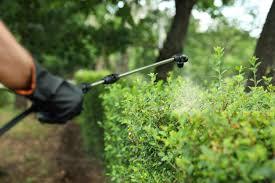Myths About Pest Control That Homeowners Still Believe

The Problem With Pest Control Myths
Pest infestations are a common concern for homeowners, yet misinformation often leads to ineffective solutions. Many believe myths passed down from neighbors or online sources without understanding how pest behavior truly works. This not only prolongs infestations but can also make them worse. Professional services such as Acme pest solutions often need to undo damage caused by these misconceptions before effective treatment can begin.
Myth 1: A Clean Home Will Never Have Pests
It’s true that cleanliness reduces the risk of infestation, but it doesn’t eliminate it entirely. Pests like ants, rodents, and cockroaches enter homes in search of food, water, and shelter. Even the cleanest kitchen can attract pests if there are small cracks or gaps that provide entry points. Seasonal changes, nearby construction, or even a neighbor’s infestation can push pests toward your home.
Myth 2: DIY Sprays Solve All Pest Problems
Store-bought sprays may provide temporary relief, but they rarely address the root cause of the infestation. Many pests live in hidden areas such as wall voids, attics, and basements. Spraying the visible ones may kill a few, but the colony or nest often remains untouched. Overuse of such sprays can also cause pests to develop resistance, making professional treatments more challenging.
Myth 3: Bed Bugs Only Live in Beds
The name “bed bug” can be misleading. These pests can be found in couches, chairs, carpets, and even behind picture frames. Bed bugs travel easily from one place to another, hitching rides on clothing, luggage, or second-hand furniture. Assuming they only live in beds means missing hidden infestations that will continue to spread.
The Role of Professional Pest Control
Licensed professionals rely on advanced methods to detect and eliminate pests effectively. They understand pest biology, breeding habits, and movement patterns, enabling them to treat infestations at the source. Professionals also use targeted applications and integrated pest management techniques to ensure long-term results. This is especially important for complex issues like termites or multi-unit property infestations.
Myth 4: You Can Spot All Pest Problems Easily
Some pests are obvious—ants marching across your counter, mice darting under the fridge—but many remain unseen until significant damage has been done. Termites, for example, can silently eat through structural wood for years without detection. Similarly, carpenter ants and some rodent species can live behind walls or in attics unnoticed. Routine inspections help catch these hidden issues before they become major repairs.
How Myths Cost Homeowners Time and Money
Believing myths often delays proper treatment, allowing infestations to grow. This can lead to higher repair bills, health risks, and ongoing frustration. In some cases, the cost of fixing pest-related damage can be several times higher than the expense of early, professional intervention.
Myth 5: Natural Remedies Are Always Safer and Better
While natural remedies like essential oils or vinegar sprays can deter certain pests temporarily, they are not always safe or effective for full eradication. Some homemade treatments can be harmful to pets, children, or plants if used incorrectly. Furthermore, pests that survive these treatments may quickly rebound.
Understanding the Science Behind Pest Control
Effective pest control combines preventive measures, targeted treatment, and ongoing monitoring. Science-backed solutions focus on disrupting pest life cycles and eliminating breeding grounds. This approach is far more reliable than relying on myths or one-time treatments.
Choosing the Right Pest Control Service
When selecting a pest control provider, look for companies with licensed technicians, transparent treatment plans, and positive client feedback. Local expertise matters because pest activity varies by region and climate. For example, a service specializing in pest control Burlington understands the seasonal trends and common infestations in that area, allowing for more precise and lasting results.
Myth 6: Once Treated, Pests Will Never Return
Even after professional treatment, pests can return if preventive measures are not maintained. Regular inspections, sealing entry points, and managing environmental factors are crucial for ongoing protection. Pest control is not a one-time event but an ongoing process.
The Importance of Prevention Over Reaction
Prevention involves more than keeping your home clean. It means addressing potential entry points, managing outdoor conditions, and ensuring storage areas are sealed and dry. Working with a professional to set up a long-term prevention plan can save homeowners stress and money in the future.
Conclusion
Pest control myths can lead to costly mistakes and prolonged infestations. By understanding the truth and working with trained professionals, homeowners can protect their property and health more effectively. Avoid relying on outdated advice, and choose solutions rooted in science and experience.
- Art
- Causes
- Crafts
- Dance
- Drinks
- Film
- Fitness
- Food
- Jocuri
- Gardening
- Health
- Home
- Literature
- Music
- Networking
- Alte
- Party
- Religion
- Shopping
- Sports
- Theater
- Wellness
